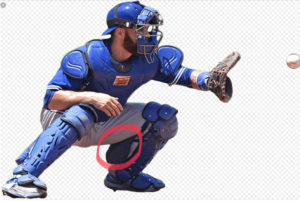- You are here:
- Home »
- Blog »
- Fitness After 40 »
- Exercise Rule #2
Exercise Rule #2
I was in the gym standing next to a guy doing a “bicep curl”.
Every time he bent his right elbow (dumbbell in hand) his head snapped over to the right, sideways, like he was ducking a bullet. Every rep. Whap. whap, whap. The weight was 30lbs.
One of the goals of exercise is controlled, smooth motion.
Think Michael Jackson and not The Scare Crow from the Wizard of Oz.
Why care? Smooth, controlled movements reduce your chance of injury for one thing. Graceful, fluid motion comes from controlling the body’s axes of rotation. The axis of rotation is like the axle on a car. It says still and the wheel rolls around it. If the axle moves while the wheel is moving, that’s trouble.
Bicep Curl Guy, by not controlling his body during the movement, is creating something called “focal loading” – concentrating the forces into a smaller region of the body rather than dissipating the forces over a wider area. Overuse injuries often come from focal loading.
Focal loading also occurs when you place a joint under too much compression, torsion, or tension.
Or in other words, too much / too long squishing, twisting, or pulling.
I just finished painting our deck. It’s 500 square feet, two levels with facing too. It took me four months. I wanted to avoid focal loading. To paint it, I had to be on my hands and knees, sometimes crouched down like I was trying to crawl under a barbed wire fence. I took my time, stayed under my load limit, and came through it just fine.
Rewind to a few years ago, and I would have steam rolled that project into one weekend and then wondered why I walked hunched over with a grimace on my face.
I also saved about $500.
One thing I used to spare my knees was catcher’s knee guards. Baseball catchers wear these to reduce focal loading on their knees. It works great. I could paint in a deep angle of bend in my knee but not so much bend that I would injure it from the focal loads (some of you may know I have had mensicus tears in both knees, left one was partially removed via surgery, right one rebuilt with PRP & rehab and I have osteoarthrosis in both knees).

Back to my main point about being Michael Jackson….
The rule is that whatever load or weight or movement you use, you must be able to move with control. Whenever you see someone perform a squat, for example, and their knees wobble or their head pitches forward or the move is jerky, the weight is too much.
Even if the weight is 10lbs.
The weight matters less than the quality of the motion.
Anything you do over and over, your brain will forge a neural pathway. That’s the second reason to control the movement. Kind of like walking the same path through the woods to school (did I mention I lived on a farm and in my day, you had to walk through the woods with lions and tigers and bears?)…you wear down a path. It gets easier and easier as you walk that same path.
If you want your workouts to carry over into life, to move with greater ease and control, then train that way. Your brain will learn and create these pathways or connections. So, if you use the strategy of my bicep curl friend, you’ll get better and better at the head whip motion.
Put your attention on your intention. Focus on different parts of your body during an exercise to feel what’s happening. For example, do a standing bicep curl like the guy in the gym. Use just the right arm. We call a bicep curl a “Gunner”.
As you bend the elbow, put your attention into the back of your neck and head. What’s going on there? What do you feel there as you bend the elbow?
Increase the weight a little and repeat the experiment. What happened?
You can do this with just about every joint in the body on this exercise and just about any other exercise too. The only joint that should move during the Gunner is the elbow. Your head, for example, should remain still.
Now, why do people use loads that create abberant motion? That’s Rule #3 and I’ll cover that in an upcoming article.
That’s all I have for now.
Thanks for reading.

